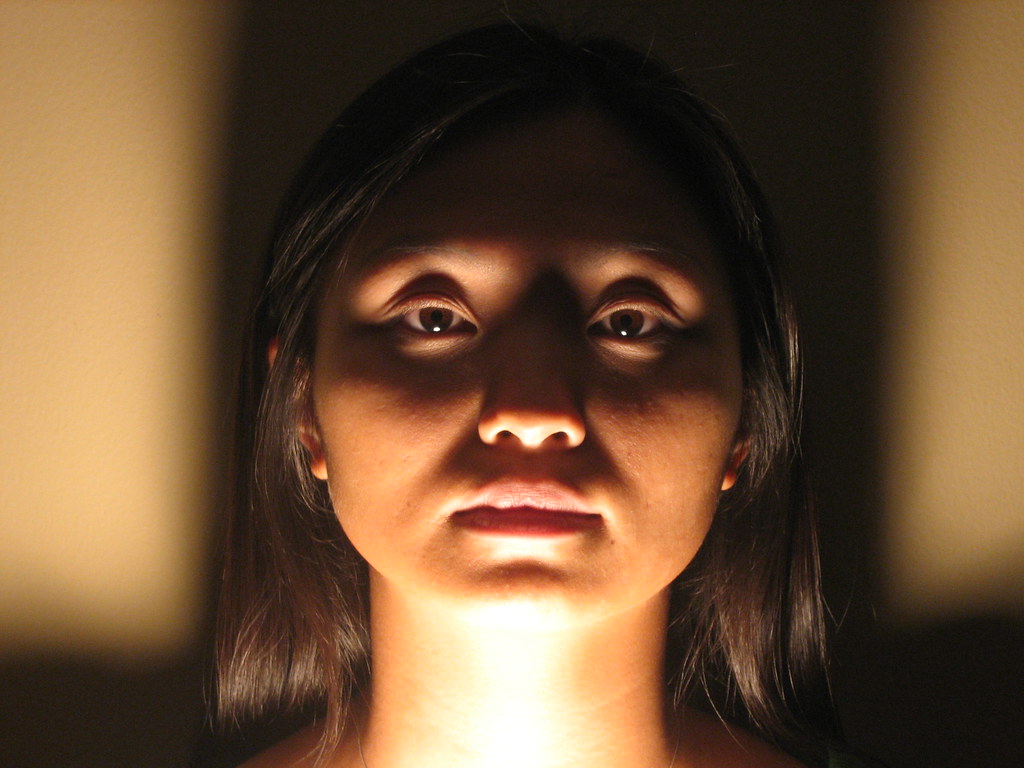In filming, a lot of different light techniques are used to show shadows, create a silhouette and make the characters look differently. A standard lighting set up is a simple way that the lights are set up which manipulate the way we see the subject. This lighting set up consist of the key light, filler/reflector light and the back light.
The key light is the brightest and most influential light. This means that when the key light is on alone this will make large and harsh shadows shadows as seen in the example to the left. Shadows are darker and less of the subject can be seen.
A filler/reflector light is used to soften the harsh shadows that the key light creates. Therefore the shadows are lighter and more of the subject can be seen. in the image to the right we can see the difference between a key light (being the left) and the filler light (being the right).

The back light is used the either counteract the key light or to create a silhouette of the subject. The back light counteracts the key light by removing the shadows and brightening up the subject. A silhouette is when the front of the subject is not visible but there is an outline of light around them (like a solar eclipse).

Under lighting is when the source is below the subject and this creates a shadow above/over the subject creating a spooky look. This is mostly used in horrors or thrillers due to this effect because it adds suspense or make the scene even more spooky than what it already is
Over lighting is when the source is above the subject and creates a shadow underneath the subject or no shadow at all. This is used to create a glamorous look and highlights the subjects features. Sometimes this is used to remove as much imperfections as possible to make the subject look there best. We all have imperfections so this lighting is a good way to over these.
Low key lighting is created using only the key and back lights. This will produce a sharp contrast of light and dark areas on the screen. Very deep and distinct shadows are formed; Low key would be more darker or have darker shadows.
Higher key lighting is when more filler lights are used to brighten up the scene or just to make the shot look more realistic. this can be done by brightening up the subject but not the background so the subject may look like they are in natural lighting etc.
Here to the right is our lighting exercise that shows all the different lighting that we used.
No comments:
Post a Comment